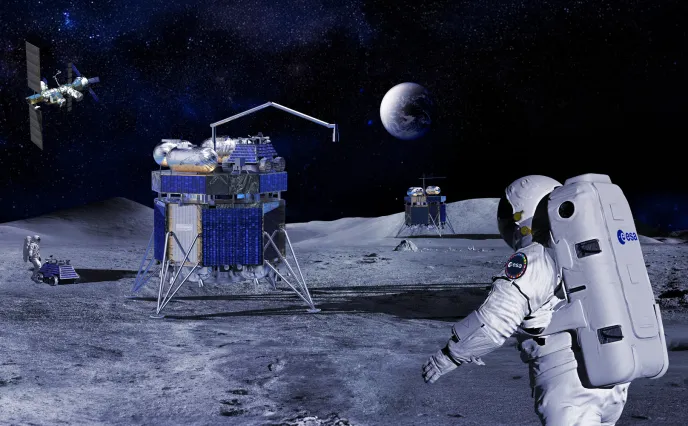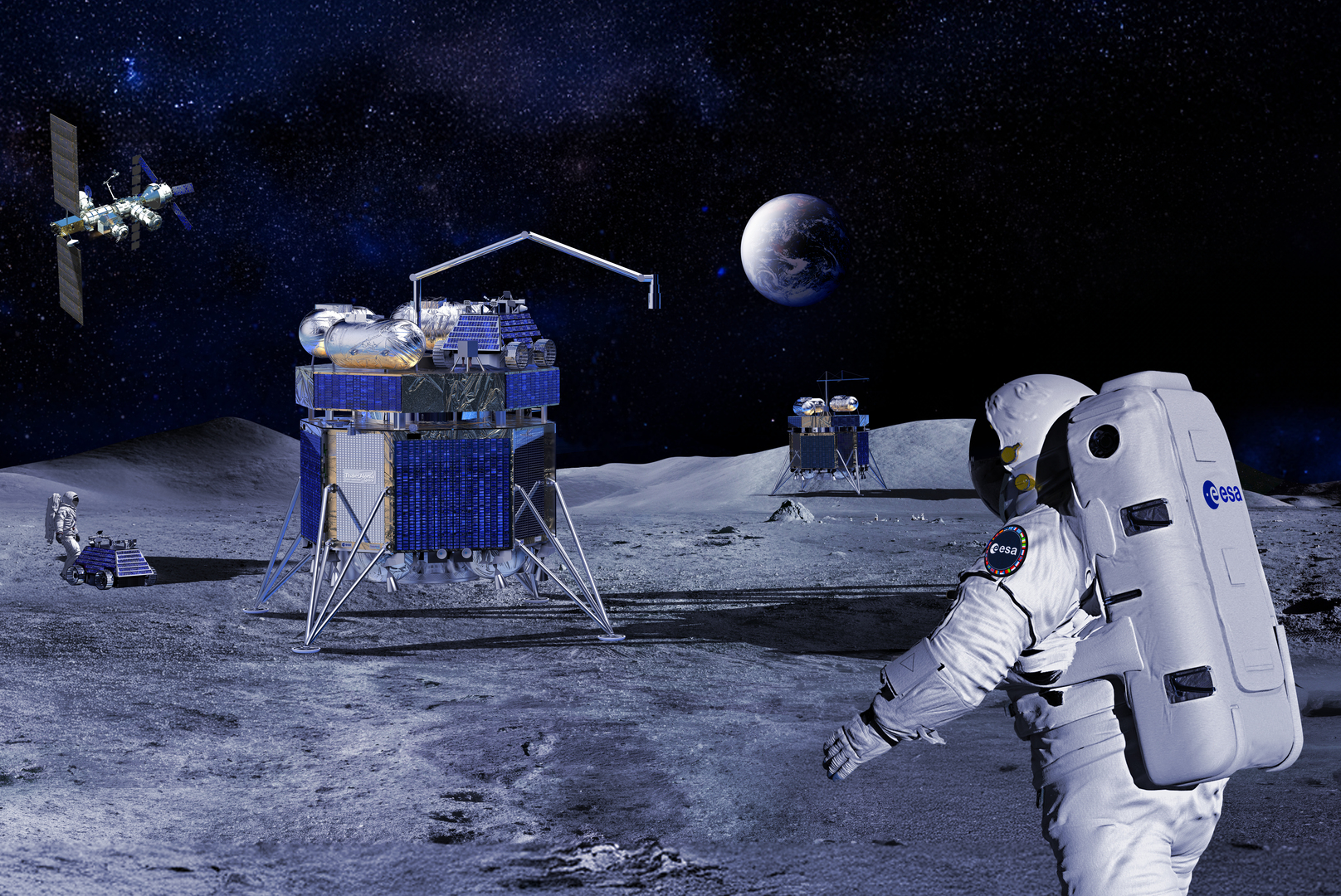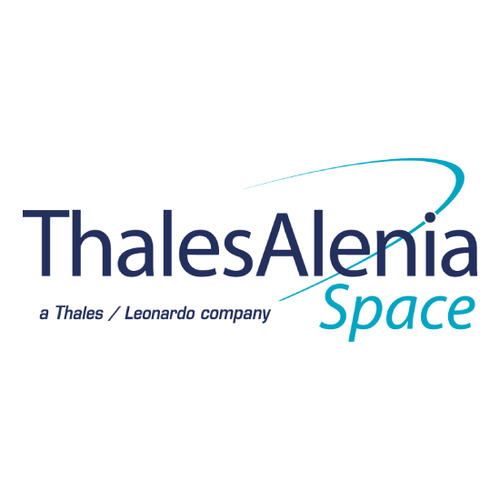Thales Alenia Space signs multiple contracts to shape the consortium carrying out the Lunar Descent Element for ESA’s Argonaut

The Argonaut lander will fly to the Moon and land on its surface ensuring the European autonomous access to the Moon
Cologne, November 20th, 2025 - Thales Alenia Space, a joint venture between Thales (67%) and Leonardo (33%), has signed multiple contracts shaping the core industrial team that will build the European Space Agency (ESA) Argonaut Lunar Descent Element. ESA’s Argonaut Mission, planned for launch from the 2030s, will deliver cargo, infrastructure and scientific instruments to the Moon’s surface.
These contracts follow the one already signed between ESA and Thales Alenia Space in January 2025. It referred to the design, development and delivery of the Lunar Descent Element (LDE), including responsibility for mission design and integration.
As prime contractor and system integrator of the LDE, Thales Alenia Space in Italy leads the industrial consortium that is responsible for the system, the entry descent and landing aspects, as well as the general and specific architectures of the thermomechanical, avionics and software chains.
The core industrial team is made up of Thales Alenia Space in Italy, Thales Alenia Space in France, Thales Alenia Space in the UK as well as OHB System AG and Nammo, part of the consortium as strategic subcontractor for the propulsion.

“The creation of this consortium led by Thales Alenia Space represents a significant milestone in this challenging Argonaut mission,” said Giampiero Di Paolo, Deputy CEO and Senior Vice President, Observation, Exploration and Navigation at Thales Alenia Space. “Under the leadership of the European Space Agency and alongside the consortium partners, Thales Alenia Space is playing a pioneering role to enable the European autonomous access to the Moon”.
“Thales Alenia Space has supplied a significant proportion of the International Space Station’s pressurized volume and is playing a major role on board Artemis, manufacturing as well key elements of Orion’s European service module and leading flagship transportation programs, thus confirming once more time that our company is a major player at the forefront of exploration and space transportation systems”, Thales Alenia Space President and CEO Hervé Derrey added.
The consortium at a glance:
Thales Alenia Space in Italy: prime contractor and end-to-end system integrator including architectures definition, final verification and validation as well as assembly integration and testing.
Thales Alenia Space in France: responsible for the design, development, and validation of the Data Handling Sub-System, including Middleware software, as well as the procurement of its component equipment including On-Board Computers.
Thales Alenia Space in the UK: responsible for the Propulsion subsystem development and for the procurement of main components, in particular Propellant tanks and Thruster.
OHB System AG: responsible for guidance, navigation and control (GNC), electrical power systems (EPS) and telecommunications (TT&C) subsystem, as well as procurement of its component equipment (Solar array, batteries, LIDAR, series of transponder).
Nammo (Nordic Ammunition Company): responsible for the design and procurement of the Main Engine, critical assets, not only for the propulsion subsystem but also for the entire Argonaut LDE end item.
About Argonaut:
The Argonaut spacecraft consists of three main elements: the lunar descent element (LDE) for flying to the Moon and landing on the target, the cargo platform one, which is the interface between the lander and its payload, and finally, the element that the mission designers want to send to the Moon.
Adaptability is a key element of Argonaut's design, which is why the cargo platform is designed to accept any mission profile: cargo for astronauts near the landing site, a rover, technology demonstration packages, production facilities using lunar resources, a lunar telescope or even a power station.
The project will strengthen Thales Alenia Space’s skills in several technological areas essential to space exploration beyond the Moon. The future space ecosystem requires new solutions dedicated to the transport and return of cargo from low Earth orbit and lunar orbit, as well as crew transport to low Earth orbit. Thales Alenia Space is ready to put in place what is needed to prepare for humanity’s future life and presence in Space, laying the foundations for the post-ISS era and meeting new economic needs for research and science.
About Thales Alenia Space
Drawing on over 40 years of experience and a unique combination of skills, expertise and cultures, Thales Alenia Space delivers cost-effective solutions for telecommunications, navigation, Earth observation, environmental monitoring, exploration, science and orbital infrastructures. Governments and private industry alike count on Thales Alenia Space to design satellite-based systems that provide anytime, anywhere connections and positioning, monitor our planet, enhance management of its resources and explore our Solar System and beyond. Thales Alenia Space sees space as a new horizon, helping build a better, more sustainable life on Earth. A joint venture between Thales (67%) and Leonardo (33%), Thales Alenia Space also teams up with Telespazio to form the Space Alliance, which offers a complete range of solutions including services. Thales Alenia Space posted consolidated revenues of €2.23 billion in 2024 and has more than 8,100 employees in 7 countries with 14 sites in Europe. www.thalesaleniaspace.com

